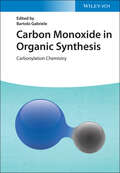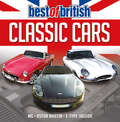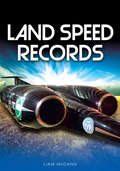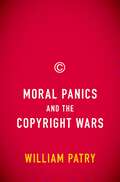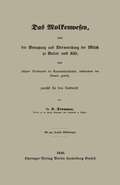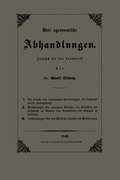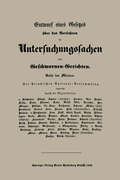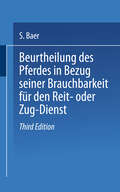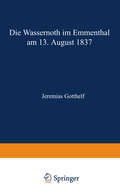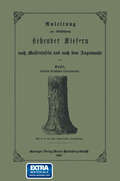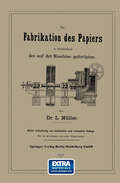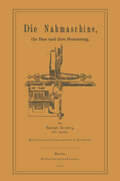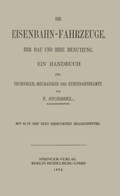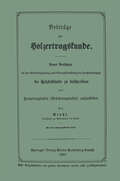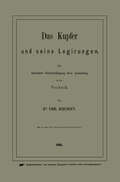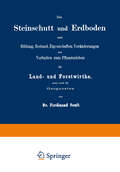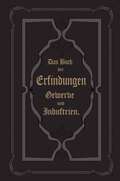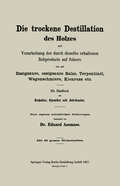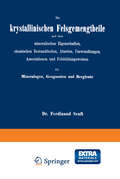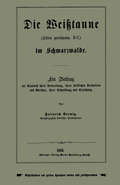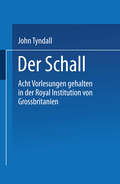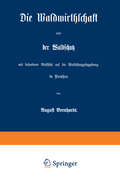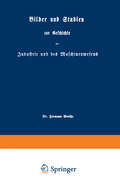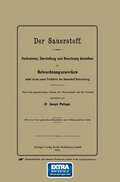- Table View
- List View
Carbon Monoxide in Organic Synthesis: Carbonylation Chemistry
by Bartolo GabrieleA thoroughly up-to-date overview of carbonylation reactions in the presence of carbon monoxide In Carbon Monoxide in Organic Synthesis: Carbonylation Chemistry, expert researcher and chemist Bartolo Gabriele delivers a robust summary of the most central advances in the field of carbonylation reactions in the presence of carbon monoxide. Beginning with a brief introduction on the importance of carbon monoxide as a building block in modern organic synthesis, the author goes on to describe metal-catalyzed carbonylations utilizing iron, cobalt, nickel, copper, and manganese. Descriptions of palladium, ruthenium, and rhodium-catalyzed reactions follow, as do discussions of metal-free carbonylation processes. The book is organized by metal to make the book useful as a guide for researchers from both academia and industry whose work touches on the direct synthesis of carbonyl compounds, carboxylic acid derivatives, and heterocycles. It aims to stimulate further discoveries in this rapidly developing field. Readers will also enjoy: A thorough introduction to carbonylations promoted by first row transition metal catalysts, including cobalt-catalyzed and nickel-catalyzed carbonylations An exploration of carbonylations promoted by second row transition metal catalysts, including ruthenium-, rhodium-, palladium(0)-, and palladium(II)-catalyzed carbonylations Practical discussions of miscellaneous carbonylation reactions, including carbonylations promoted by third row transition metal catalysts and metal-free carbonylation processes Perfect for catalytic and organic chemists, Carbon Monoxide in Organic Synthesis: Carbonylation Chemistry is also an indispensable resource for chemists working with organometallics and industrial chemists seeking a summary of important processes used to synthesize value-added products.
Talking Books: Pioneering and Beyond
by Marilyn Lundell MajeskaAlthough libraries had been finding ways to serve blind patrons as early as the late nineteenth century, the passage of the Pratt-Smoot Act in 1931 was a game-changer. Congress appropriated funds to provide books for blind adults, and the National Library Service for the Blind and Physically Handicapped was established. The five decades after Pratt-Smoot saw many technological developments in recording machines and techniques, some coming hand in hand with innovations in the music industry: from record players, to reel-to-reel tapes, to cassette players. Inevitably, the "talking books" program would always be a compromise between the best possible product and the limitations of what was practical and economically feasible. Author Majeska synthesizes information from interviews and old files to compile a detailed history of talking books from 1932 to 1988--before computers changed the whole scene.
Best of British Classic Cars
by Jon StroudA celebration of three of Britain’s iconic classic cars: The NG, Aston Martin and E-Type Jaguar. MG: Regarded as the archetypal British sports car, the MG holds a special place in the hearts of many motoring enthusiasts the world over. Just a mention of of MGA, MGB or Midget conjures up the exciting image of flying-jacket festooned open-top motoring. All these classic MG models are featured in this eBook. Aston Martin: The story of Great Britain’s most coveted motoring marques, Aston Martin was formed in the 1920sand has had a rollercoaster ride ever since, producing some of the most beautiful sports cars ever seen. Discover the cars of Aston Martin through the ages such as the 1929 International and the contemporary V12 Vantage Zagato.E-Type Jaguar: An innovative sports car of the first degree, the E-Type Jaguar captured the imagination of car enthusiasts the world overwith its sleek, stunning looks, its exhilarating performance and its sensible price when it took to the road in 1961. It was an instant sensation and a winner for Jaguar for 14 years. This eBook reviews the glory years if the Series 1, 2 and 3.
Land Speed Records
by Liam McCannIn 1886 German engineer Karl Benz invented a petrol-powered automobile that became the first production motor vehicle. Steam and electric cars already existed but they were slow and cumbersome, and the internal-combustion engine revolutionised the industry. Only a decade or so later, drivers of all three types of car were battling for the outright speed record but progress was slow and it took until 1904 before Frenchman Louis Rigolly reached 100mph.By the 1920s, motor racing had entered a golden age and stars like Sir Henry Segrave, John Cobb and Sir Malcolm Campbell all built dedicated land speed record cars in pursuit of sporting immortality. Competition was stiff, particularly from the United States, and by the 1960s the Arfons brothers and Craig Breedlove were using jet power to reach speeds of 600mph on the Bonneville Salt Flats.In 1983 Richard Noble recaptured the record for Britain in Thrust 2. Fourteen years later, RAF pilot Andy Green became the first man to drive faster than sound in Thrust SSC at the Black Rock Desert in Nevada. Today, at least eight teams are developing cars to run at more than 1,000mph. This book chronicles the record from humble beginnings to the supersonic records of tomorrow.
Moral Panics and the Copyright Wars
by William PatryMetaphors, moral panics, folk devils, Jack Valenti, Joseph Schumpeter, John Maynard Keynes, predictable irrationality, and free market fundamentalism are a few of the topics covered in this lively, unflinching examination of the Copyright Wars: the pitched battles over new technology, business models, and most of all, consumers. In Moral Panics and the Copyright Wars, William Patry lays bare how we got to where we are: a bloated, punitive legal regime that has strayed far from its modest, but important roots. Patry demonstrates how copyright is a utilitarian government program--not a property or moral right. As a government program, copyright must be regulated and held accountable to ensure it is serving its public purpose. Just as Wall Street must serve Main Street, neither can copyright be left to a Reaganite "magic of the market." The way we have come to talk about copyright--metaphoric language demonizing everyone involved--has led to bad business and bad policy decisions. Unless we recognize that the debates over copyright are debates over business models, we will never be able to make the correct business and policy decisions. A centrist and believer in appropriately balanced copyright laws, Patry concludes that calls for strong copyright laws, just like calls for weak copyright laws, miss the point entirely: the only laws we need are effective laws, laws that further the purpose of encouraging the creation of new works and learning. Our current regime, unfortunately, creates too many bad incentives, leading to bad conduct. Just as President Obama has called for re-tooling and re-imagining the auto industry, Patry calls for a remaking of our copyright laws so that they may once again be respected.
